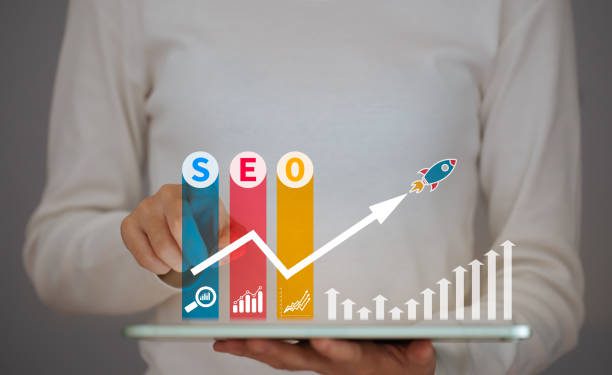Have you ever wondered how contents make it to the first page of a Google search? If no or non-vehement yes, then you need to know more about SEO and how it works
These contents are displayed on the first page of a search result because they have been optimized.
Optimization simply means making something fit a particular system by following a set of rules.
SEO means Search engine optimization. They are those steps you take to make your content seen on a search engine, especially on the first page.
One of the goals you should have is directing traffic to your website. And the best way to do this is to make people see your website’s content online. These website contents could be your business blog, landing page, and even your home page.
SEO is like coming out and standing in front of the people interested in your products so that whenever they search for a keyword related to your products, your brand shows up.
The end goal of SEO is first, to build your brand’s awareness and then to generate leads that could convert.
There are different steps you should take to make your SEO a success and you would learn them in the course of this article.
The two sides of SEO
Every activity that contributes to SEO are classified into two types
- On page SEO
- Off page SEO
On-page SEO refers to changes you make on your site that impact SEO. These include writing quality content that readers will like, using keywords that people are searching for, adding meta tags and alt tags, using HTML headers, structuring your website well, etc.
Off-page SEO is all those activities that take place outside your website to raise your site’s rankings. Those activities include earning backlinks, getting traffic from social media and other sources.
How does SEO work?

Your SEO success is determined by how search engines work and how well you’re able to keep your site up to its standard for ranking.
You can say your website content is search engine optimized when it appears on the first page of a search engine like Google, bing, yahoo, etc.
Different processes take place before your content get’s to a search engine’s first page.
For a search engine like Google, the first thing that will qualify your website for ranking is when Google robots can crawl your site.
If a search engine can’t crawl your site, it could be for the following reasons:
- Website is brand new and hasn’t been crawled yet.
- Site isn’t linked to any external websites.
- The website’s navigation makes it hard for a robot to crawl it effectively.
- Your site contains some basic code called crawler directives that is blocking search engines.
- Your site has been penalized by Google for spammy tactics.
- The site isn’t well connected from other sites on the web
Making Your site crawlable is all about making Google see your site.
A search engine scours the Internet for content, looking over the code/content for each URL they find after which they store everything they found in a database, this is known as indexing.
After indexing, it now has the chance to be displayed as a result of relevant queries.
Once your page has been crawled and is placed in a search engine’s index, it is your SEO efforts that will place you in the SERPs(Search Engine’s Result Page)
Google will rank your content on the first page if it provides the pieces of content that will best answer a searcher’s query, which means that results are ordered according to relevance.
How would you make your content relevant?
- By answering the searcher’s questions. Quality content wins all the time. Let your content contain everything that a reader would like to know from that particular search.
- The second thing is to use a specific keyword.
Keyword research provides you with specific search data that can help you answer questions like:
- What are people searching for?
- How many people are searching for it?
- In what format do they want that information?
After that, the next thing is to help the search engine understand what your page contains by adding the necessary title and meta descriptions, adding alt tags to your images, choosing the right format and arrangement for your content, and, making sure your pictures, videos and other files are compressed enough to enhance the speed of your website.
You can now go on with other off-page activities like directing traffic from your social media and earning backlinks from other websites. This improves the popularity of your website and popularity is a major factor for SEO.
In summary, once your website can be crawled by a search engine, relevant optimized content will always win.
SEO is a long-term thing. It requires patience and time for it to be effective. Always have a consistent budget for SEO for your brand and keep testing and trying new things. Don’t forget to measure and keep track of your progress.
If you have questions about SEO, you can book a free consultation session to talk to a team member by clicking on I want a free consultation.





